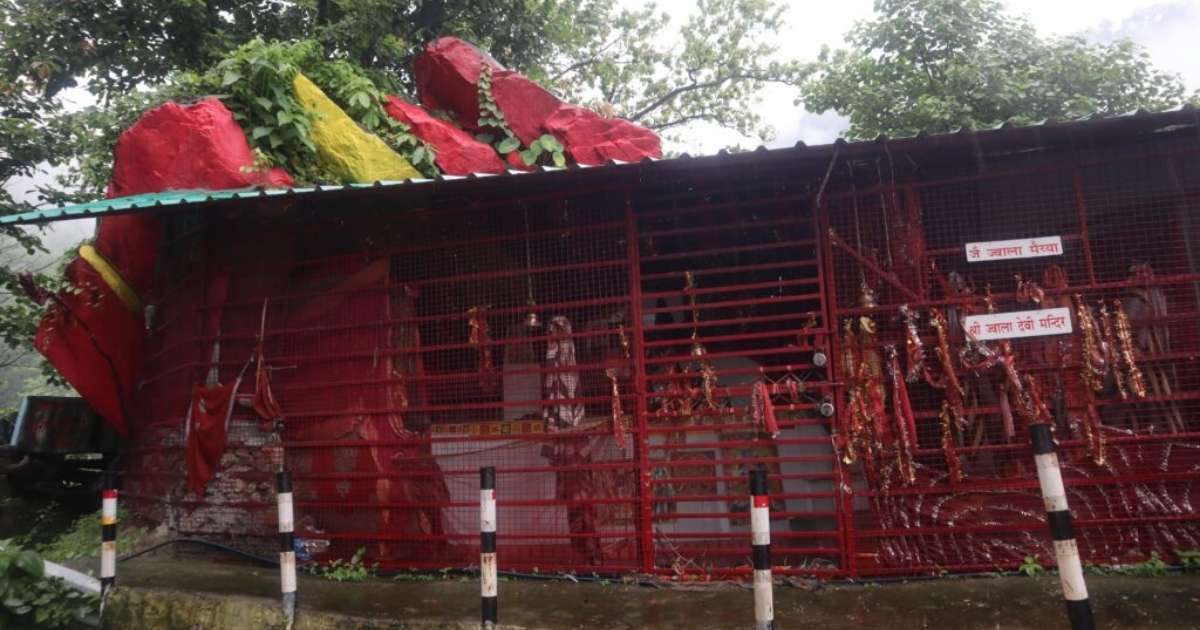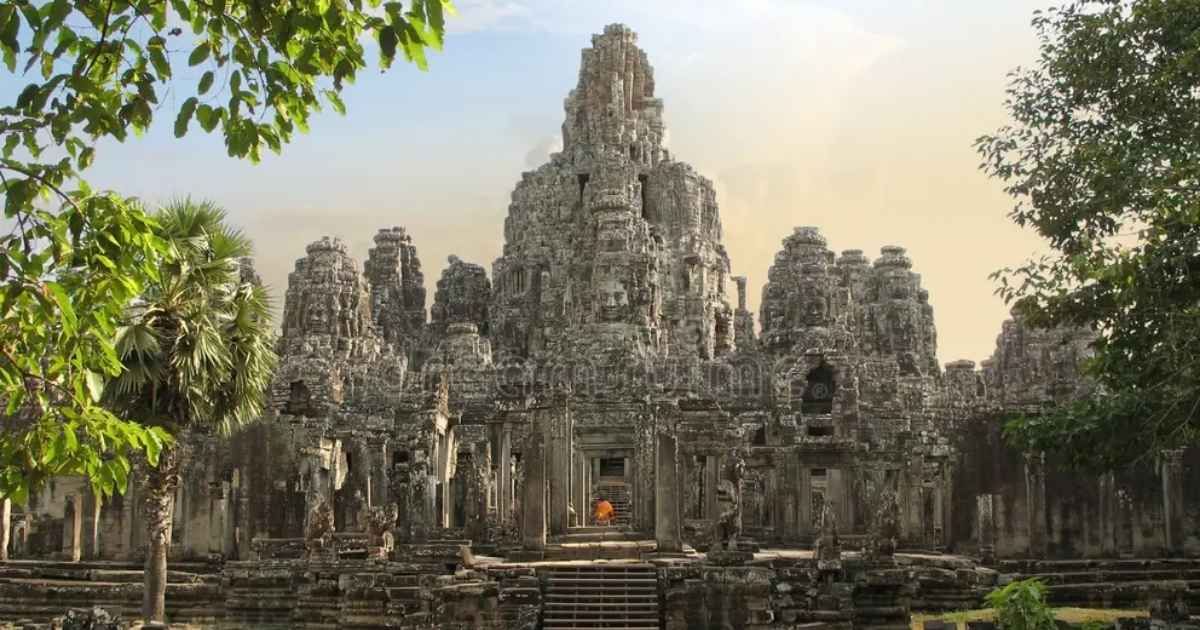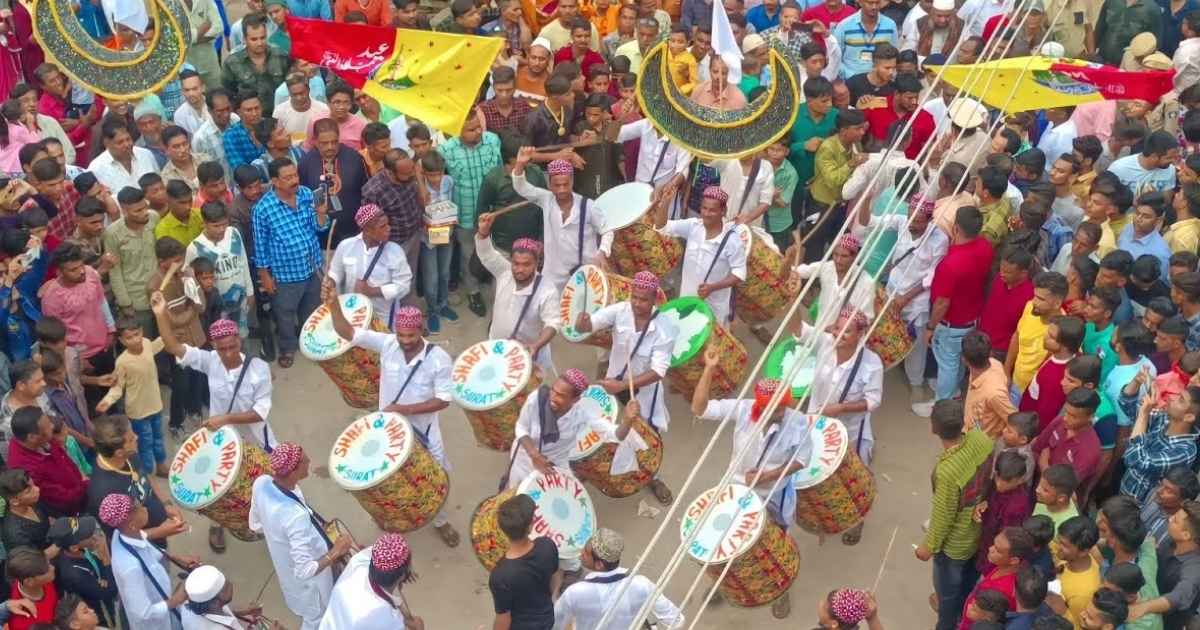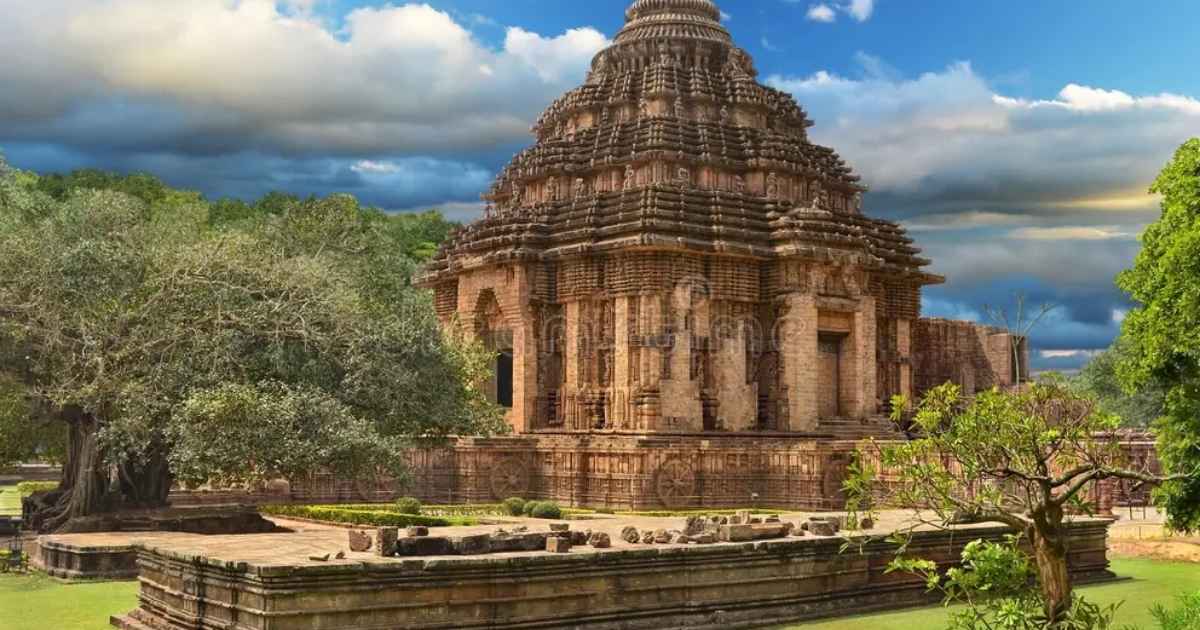Have you ever heard about a place that just keeps popping up in conversations or posts, and you think, “What’s so special about it?” That’s exactly how I felt about Punyagiri Temple. I kept hearing stories ,some about breathtaking views, others about deep spiritual vibes ,but I couldn’t find one solid guide that gave me the full picture. So I decided to dig in and finally understand what makes this place so unforgettable.
In this blog, you’ll get everything you need to know about Punyagiri Temple ,from its timings and mythological background to travel tips and nearby attractions. Whether you’re planning a visit, seeking spiritual peace, or just curious about its history, this guide covers it all in one simple read. Let’s uncover why this temple has become a must-visit spot for so many.
Punyagiri Temple
Tucked away in the serene hills of Andhra Pradesh, Punyagiri Temple is more than just a religious site ,it’s a peaceful retreat for the soul. Surrounded by lush greenery and nestled in the Eastern Ghats, the temple attracts both devotees and nature lovers who come seeking spiritual calm and scenic beauty. The atmosphere here feels timeless, filled with devotion, chants, and the scent of incense.
What makes this temple truly special is its connection to ancient legends and deep-rooted faith. Locals believe that visiting this temple helps one find inner peace and even spiritual cleansing. Whether you’re coming for prayers, history, or a quiet moment with nature, Punyagiri Temple welcomes everyone with open arms and a tranquil spirit.
The Divine Significance of Punyagiri Temple

Punyagiri Temple holds a sacred place in the hearts of thousands, believed to be a spiritual gateway for those seeking moksha, or liberation. Many refer to it as the “Dakshinakashi,” meaning the Kashi of the South, drawing comparisons to one of the holiest sites in India dedicated to Lord Shiva. Devotees believe that offering prayers here, especially during auspicious times, can purify one’s soul and bring divine blessings. The spiritual energy surrounding the temple is something that many say you have to feel in person to truly understand.
Apart from its reputation as a powerful pilgrimage site, the temple is deeply tied to faith-based rituals like ash immersion and spiritual cleansing. The sacred waters around the hill are believed to wash away negativity and burdens carried through life. Over the years, this has become a place where people come not just to worship, but to heal, reflect, and connect with something greater than themselves.
Must read : Complete Guide to Srisailam Temple Darshan Timings and Sevas
Mythological Connections and Legends
The history of Punyagiri Temple is woven with fascinating tales from the Mahabharata. According to legend, the Pandavas spent part of their forest exile in the dense woods near this region. It’s said that Bhima once battled the mighty Kichaka here to protect Draupadi’s dignity during their secret stay in the kingdom of Virata. The local name Virataraju is even believed to come from this connection, deepening the temple’s mythological ties.
Another legend speaks of Sudeshna Devi, queen of King Virata, who once worshipped Lord Shiva at this very site. Over time, these stories became etched into the spiritual fabric of Punyagiri, making it more than a physical destination ,it’s a living memory of epic events. For believers, every stone and corner of the temple carries whispers of ancient truths and the power of divine intervention.
Key Mythological Highlights:
- Pandavas’ Exile: Believed to have stayed near the temple during their forest exile.
- Bhima vs. Kichaka: The fierce battle to protect Draupadi is said to have occurred in this region.
- Virataraju Connection: Named after King Virata, linking local history to the Mahabharata.
- Sudeshna Devi’s Devotion: The queen is said to have prayed to Lord Shiva at this temple.
- Spiritual Echoes of the Mahabharata: Every part of the temple is steeped in ancient legend and belief.
Unique Features of Punyagiri Temple

What sets Punyagiri Temple apart isn’t just its spiritual energy ,it’s the powerful combination of nature, mythology, and architecture that makes the experience unforgettable. Unlike many temples built in bustling towns, this one rests quietly among the Eastern Ghats, offering visitors both spiritual peace and breathtaking views. The Shiva Lingas here are believed to radiate intense divine energy, especially during major festivals like Maha Shivaratri and Karthika Masam.
The temple also features the Ashtika Mandapam, a sacred space where rituals and devotional chants take place throughout the day. Just nearby, you’ll find natural water streams considered sacred waters for spiritual cleansing. There’s even a meditation spot where silence is more powerful than words. For those who enjoy exploring, nearby attractions like the Trimurti Cave and Chinaputturdara Falls add adventure to devotion.
Standout Features of Punyagiri Temple:
- Located in the Eastern Ghats, surrounded by peaceful forested hills
- Sacred Shiva Lingas, central to temple worship
- Ashtika Mandapam: A dedicated space for rituals and prayers
- Sacred natural streams used for spiritual cleansing and ash immersion rituals
- Quiet meditation spots ideal for reflection and inner peace
- Nearby natural wonders like Trimurti Cave and Chinaputturdara Falls
Must visit : Karnataka Pravasi Soudha Tirumala: A Complete Travel Guide
Famous Festivals at This Temple

Festivals at Punyagiri Temple are a vibrant blend of devotion, tradition, and cultural unity. The most significant celebration here is Maha Shivaratri, when thousands of devotees gather to offer prayers to Lord Shiva through night-long rituals, chanting, and fasting. The temple glows with oil lamps, and the energy is said to be spiritually intense, drawing pilgrims from across Andhra Pradesh and beyond.
Other important festivals include Karthika Masam, celebrated with deepam lighting and special poojas, and Ugadi, which marks the Telugu New Year with floral decorations and festive food. Navaratri also sees a wave of devotees arriving to seek blessings during the nine nights of divine worship. These events are not just religious ,they bring families, communities, and even curious travelers together in a joyful, sacred atmosphere.
Major Festivals Celebrated at Punyagiri Temple:
- Maha Shivaratri – All-night worship of Lord Shiva with massive pilgrim participation
- Karthika Masam – Special lighting rituals, spiritual cleansing, and deep devotion
- Ugadi Festival – Traditional celebration of Telugu New Year with poojas and offerings
- Navratri Festival – Nine days of worship and cultural activities honoring divine feminine energy
Vizianagaram Punyagiri Temple timings
Punyagiri Temple in Vizianagaram welcomes visitors daily from 6:00 AM to 7:00 PM, consistently throughout the week. This generous schedule gives you plenty of time to plan your visit ,whether you’re coming early in the morning to soak in the serene mountain air or later in the day for a peaceful darshan .
Just as a heads-up: these timings are based on recent information, but they can change during special occasions like Maha Shivaratri or maintenance days. So it’s smart to double-check before you go ,especially if your trip coincides with a festival or government holiday.
Quick Timing Snapshot:
| Day | Opening | Closing |
| All Days | 6 AM | 7 PM |
How to Reach Punyagiri Temple, Vizianagaram
Reaching Punyagiri Temple is surprisingly simple, whether you’re traveling by air, rail, or road. The nearest airport is Visakhapatnam Airport, about 70 km from the temple ,after landing, you can take a taxi or pick up a bus toward Srungavarapukota (S. Kota) before the final 4 km journey by car or local transport . If you prefer rail travel, head to Vizianagaram Junction, around 35–37 km away. From there, buses and private taxis run regularly to S. Kota, and then it’s a short drive uphill .
By road, the temple is well-connected. It’s roughly a 36 km drive from Vizianagaram, which takes about 45 minutes via NH routes . You can catch direct APSRTC buses from Vizianagaram to S. Kota, or take private cabs if you prefer comfort. Once in S. Kota (which is roughly 4 km from the hill), local taxis or auto‑rickshaws can take you the rest of the way ,just ask for “Punyagiri hill.” The route offers a scenic drive through rolling foothills and lush village landscapes.
Travel Options at a Glance:
- By Air
- Nearest airport: Visakhapatnam (~70 km)
- Then taxi or bus to S. Kota + local transport to temple
- Nearest airport: Visakhapatnam (~70 km)
- By Train
- Nearest station: Vizianagaram Junction (~35–37 km)
- Frequent buses and cabs available to S. Kota
- Nearest station: Vizianagaram Junction (~35–37 km)
- By Road
- Direct drive from Vizianagaram (~36 km / 45 min).
- APSRTC buses from Vizianagaram to S. Kota, then local transport to the temple .
- Direct drive from Vizianagaram (~36 km / 45 min).
If you’re planning a peaceful getaway or a spiritual journey up the hills, this route is your smooth, scenic path to Punyagiri Temple.
Must Visit Historical Temples
If you’re planning a trip to Punyagiri Temple, you’re in for more than just one spiritual experience. The Vizianagaram region and surrounding areas are home to several ancient temples that are steeped in history, architectural beauty, and divine significance. These places offer a glimpse into Andhra Pradesh’s rich religious heritage and are ideal for anyone interested in extending their pilgrimage or simply exploring more sacred sites.
From sun temples to shrines devoted to various forms of Vishnu and Shiva, each temple has its own story and cultural depth. Many of these spots, like Arasavalli and Simhachalam, are easily reachable by road and make for perfect day trips. If you’re traveling with family or spiritual seekers, visiting these temples along with Punyagiri adds meaning and depth to your journey.
Notable Historical Temples Near Punyagiri:
- Simhachalam Temple (Visakhapatnam) – A renowned hill temple dedicated to Sri Lakshmi Narasimha Swamy
- Arasavalli Sun Temple (Srikakulam) – One of the few sun temples still active in India
- Sri Kurmam Temple – A rare temple where Lord Vishnu is worshipped in the form of Kurma (tortoise) avatar
- Mandasa Vasudeva Perumal Temple – Known for intricate carvings and serene surroundings
- Sri Lakshmi Narasimha Swamy Temple, Dharmapuri – Famous for its spiritual ambiance and ancient lore
- Kaleshwaram: Mukteswara Swamy Temple – A powerful Shiva temple often linked with moksha (liberation)
- Vemulawada Raja Rajeshwara Temple – Another popular Shiva temple known for ash immersion rituals
Read more :Explore Tirupati with Telangana Tourism – Itinerary, Pricing & Darshan Tips
Frequently Asked Questions(FAQs)
What are the daily timings of Punyagiri Temple?
The temple is open every day from 6:00 AM to 7:00 PM. It’s best to visit early in the morning or before evening rituals begin.
Where is Punyagiri Temple located?
It’s located near Srungavarapukota (S. Kota) in the Vizianagaram District of Andhra Pradesh, nestled in the scenic Eastern Ghats.
Which deity is worshipped at Punyagiri Temple?
The temple is dedicated to Lord Shiva, worshipped here as Uma Kotilingeswara Swamy.
What is the best time to visit the temple?
The best time to visit is during Maha Shivaratri or in the winter months from October to February, when the weather is pleasant.
Is there public transport available to the temple?
Yes! You can take buses or taxis from Vizianagaram to S. Kota, and then use local autos or jeeps for the final stretch to the temple hill.
Conclusion
A visit to Punyagiri Temple isn’t just about climbing a hill or offering a prayer ,it’s about connecting with something timeless, peaceful, and deeply meaningful. Whether you’re drawn by mythology, spirituality, or the calm of nature, this temple has a way of touching your soul. The legends, the festivals, the rituals ,they all come together to create an experience that stays with you long after you leave.
If you’re seeking a place where devotion meets serenity, Punyagiri Temple is waiting. It welcomes every traveler, every seeker, every curious heart ,with open arms and a sacred silence that speaks louder than words. So whenever you’re ready, the hill will be there. And who knows ,you just might leave feeling a little lighter than when you came.

With over five years of experience in crafting engaging and insightful content, I’m the creator of TravelLeeps.com; a travel blog dedicated to inspiring journeys, practical tips, and unforgettable destinations around the globe.


